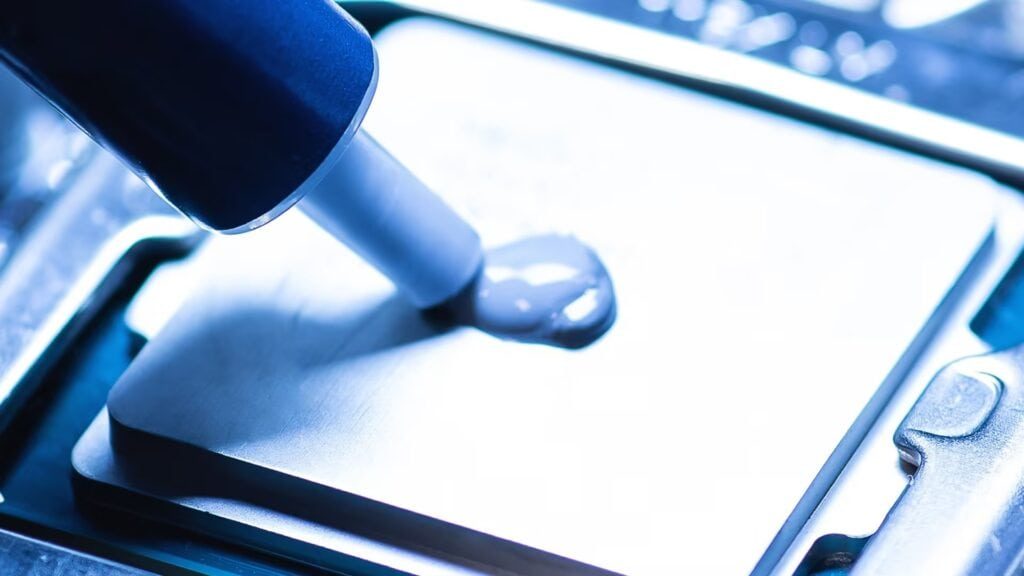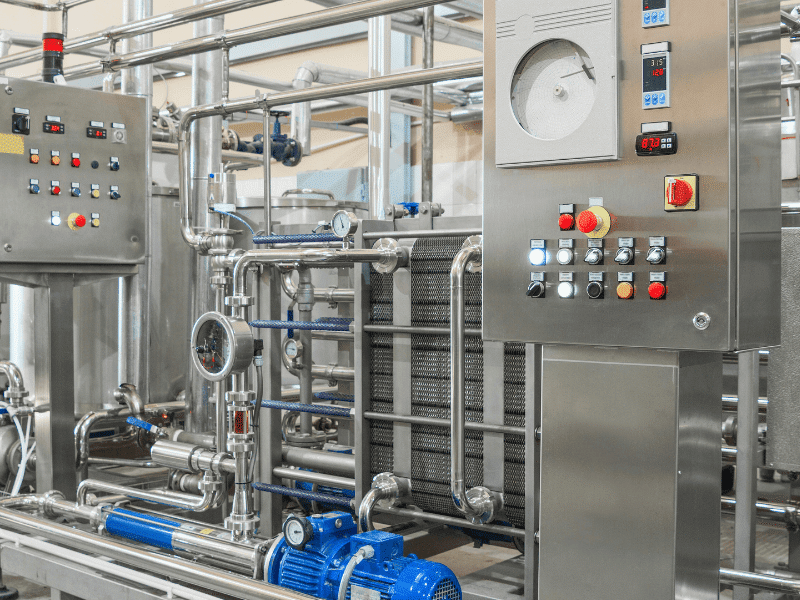Structural adhesives are modern solutions for joining materials. Industries need strong, efficient, and adaptable ways to bond things. This article explains why structural adhesives are not just a choice. They are vital for industrial bonding today and in the future.
The global structural adhesives market was at USD 13.92 billion in 2024. Now, it has potential to reach USD 22.15 billion by 2033 Straits Research.
Deconstructing Structural Adhesives
Defining Structural Adhesives
Structural adhesives are different from everyday glues. They are made for critical jobs that need strong bonds. These are not just simple sticky substances. Engineers design structural adhesives to handle heavy weights and tough uses. They must perform in demanding situations.
Key features include strength when pulled, resistance to sliding forces, and resistance to peeling. They also must last when exposed to different conditions like heat, cold, and moisture. These features are vital for industrial uses.
Unique Insight
These special adhesives are created using careful science. At a tiny molecular level, they are built to do specific industrial jobs. This is different from how basic glues work. Basic glues mainly focus on making surfaces stick together.
Structural adhesives are designed for more. They must provide strength and hold parts together reliably over time. This engineering focus makes them essential for building strong and safe industrial products.
Overview of Traditional Methods
For many years, industries have used methods like welding, riveting, and bolting to join materials. Mechanical fasteners are also common. These techniques are well-known and have been used for a long time.
Limitations Exposed
However, these traditional methods have drawbacks, especially in today’s advanced industries. Welding and fasteners create stress points. These points can lead to cracks and breaks over time, especially when parts move or vibrate. This is called material fatigue.
Welding uses heat that changes the material. Drilling holes for bolts and rivets also weakens materials. These changes can affect how strong and reliable the final product is.
Bolts, rivets, and welds add weight. They also limit design choices. Products can become heavier and less efficient. Traditional methods can also make surfaces look rough. Extra steps are needed to make joints smooth and visually appealing.
These methods are also difficult for joining different kinds of materials. When temperatures change, materials expand and contract at different rates. Over time, welds and fasteners can have difficulty keeping these materials together, causing failures and corrosion.
Value Proposition
Structural adhesives can solve these issues. They are stronger, lighter, and make better-looking bonds. They also enable more intricate designs and can bond disparate materials more efficiently. Structural adhesives are a newer method for making bonds that outperform older methods.
Benefits of Structural Adhesives in Industrial Applications
Impeccable Strength
Structural adhesives are strong and make joints that last. Unlike traditional methods that focus stress on small areas, adhesives spread stress evenly across the entire bonded surface. This even distribution reduces stress points. It makes the whole joint stronger and less likely to break.
Adhesives also help parts withstand shaking and movement. They absorb vibrations and resist fatigue. This is very important for products that operate in dynamic conditions, like vehicles and machinery. Adhesive bonds maintain their integrity longer, even with constant stress and motion.
Strength-to-Weight Ratio Advantage
For their strength, adhesive joints are surprisingly light. Adhesives can offer equal or greater strength with reduced weight, as compared to bolts or welds. This gives you a huge strength-to-weight ratio advantage. They are essential for industries such as aerospace and automotive because lighter components are beneficial.
Lighter components enhance fuel economy and performance. Adhesive bonding is proven to allow maximum weight reduction of assemblies without compromising strength. This is one major factor driving the uptake of structural adhesive technology across these markets.
Bonding Between Dissimilar Materials
There are a lot of different materials that can be joined together through adhesives. They handle metals, plastics, composites, and even glass well. Being able to bond different types of material creates new possibilities in the design of products. These adhesives close the voids between two hard-to-join materials, which incorporates the normal bond methodology.
Materials expand and contract at different rates in response to temperature changes. This is referred to as the Coefficient of Thermal Expansion (CTE). Structural adhesives accommodate CTE differences. Some adhesive formulas are specifically made to flex and move with the materials. This ensures that joints do not fail due to temperature changes.
Value Proposition
This capability to bond different materials is very valuable. It allows engineers to create new and innovative products. They can combine the best properties of different materials in one design. This leads to products that are lighter, stronger, and work better. Structural adhesives expand design possibilities and improve product functionality.
Design Flexibility and Aesthetic Superiority
Adhesives create smooth, clean joints. There are no bolt heads or weld lines. The bond line is often invisible. This seamless appearance is important for many products where looks matter.
Because adhesives bond surfaces directly, they allow for more complex and streamlined designs. Engineers are not limited by where they can place fasteners. Adhesives offer the freedom to create innovative and efficient shapes.
Unique Insight
Structural adhesives have revolutionized product design. In consumer electronics, for example, adhesives enable sleek, button-less designs. In architecture, they make glass facades and curved panels possible, which would be impossible with mechanical fasteners. These are just a handful of examples of the ways that adhesives have transformed the appearance and functionality of products across sectors.
Corrosion Resistance and Environmental Sealing
Structural adhesives perform beyond mere bonding. They also keep joints sealed against the elements. The barrier is the adhesive layer. It blocks moisture, chemicals and other corrosive agents from getting to the bonded surface.
Conventional fasteners and welds can leave gaps and holes that can hold moisture and initiate corrosion. Many of these corrosion threats are eliminated by adhesives. This seals the joint continuously and eliminates the likelihood of corrosion forming and propagating.
Value Proposition
This anti-corrosive nature is a significant advantage in a rugged industrial environment. Structural adhesives contribute to the longevity and minimal maintenance of the products they bond. This results in reduced costs over time and greater reliability in demanding environments.
The long-term performance and durability of industrial products are largely determined by the sealing properties of adhesives.
Structural Adhesives and Their Tailored Applications
Epoxy Adhesives
What is epoxy adhesive? — Epoxy adhesives are a class of adhesives that are essential to structural bonding. They are famous for producing very strong bonds. This strength is important for keeping pieces held in place under heavy stress. Epoxy is also resistant to pollutants. This is especially important in factories and other locations where materials can be quickly exposed to corrosive substances.
Heat does not easily compromise epoxy. It stays robust even as the temperature increases. WhbtsqivcuiEpoxy Bonds Are Generally Rigid They are rigid, nonflexible links. This stiffness is essential in structures that should not bend or flex.
Adhesive Key Properties Chart
| Adhesive Type | Strength (MPa) | Flexibility | Cure Time (min) | Temperature Range (°C) |
|---|---|---|---|---|
| Epoxy | 20-30 | Low | 5-60 | -50 to 150 |
| Acrylic | 10-20 | Medium | 1-30 | -20 to 100 |
| Polyurethane | 5-15 | High | 1-60 | -40 to 120 |
| Silicone | 1-5 | Very High | 1-24 hours | -50 to 200 |
| Hot Melt | 1-5 | Low | Instant | -20 to 80 |
Properties
Epoxy is very high in strength in tension, shear and compression. It resists acids, solvents, and bases. It works perfectly in cold as well as hot temperatures. Others operate above 150°C (300°F,) and some epoxies do. The bond is firm and stable.
Applications
Aerospace relies on epoxy for aircraft frames. Car makers use it for vehicle parts. Electronics are encased in epoxy for protection. Heavy industries use it for tough assemblies. Epoxy is used wherever strong, lasting bonds are needed in demanding industrial settings. Think of airplane wings, car bodies, and machinery housings.
Advancements in Toughened Epoxies:
Standard epoxy can be brittle. It can crack if hit hard or bent sharply. Scientists have developed “toughened” epoxies. These new types are better at resisting impacts. They can flex a bit without breaking. They keep the original epoxy strengths – chemical and heat resistance.
But they add impact and bend resistance. This improvement makes toughened epoxies useful in even more applications where both strength and toughness are needed.
Acrylic Adhesives
Acrylic adhesives are designed for fast work. They cure very quickly, sometimes in just minutes. This speed is vital in fast-paced manufacturing. Acrylics also have good peel strength. This means they resist being pulled apart at an angle. They also handle impacts well, resisting sudden shocks.
A practical advantage is that acrylics can bond to surfaces that are not perfectly clean. While clean surfaces are always best, acrylics offer more tolerance. They bond strongly to both plastics and metals. This versatility and speed make them efficient in many assembly processes.
Properties:
Acrylics cure rapidly, increasing production speed. They offer good resistance to peel forces and impacts. They tolerate some surface contamination. They bond to a wide range of plastics and metals effectively.
Applications:
Car assembly lines use acrylics for quick bonds. Marine industries use them in boat construction, where moisture resistance is helpful. Sign makers use them for fast and durable signs. Appliance factories use them for efficient assembly. Any process needing fast, strong bonds can benefit from acrylic adhesives, especially when speed and some surface tolerance are important.
Value Proposition:
Acrylic adhesives boost efficiency. Their fast cure times mean faster production. Less surface preparation saves labor and time. This combination of speed and reduced prep work cuts costs. Acrylics are an affordable solution for many industries looking to increase the speed or efficiency of their manufacturing processes. They make it possible to manufacture products faster and more cost effectively.
Polyurethane Adhesives
Polyurethane adhesives are flexible. Their connections are able to flex and move. This adaptability is crucial for managing impacts and vibrations. They can give a cushioning effect between bonded parts. This vibration damping protects the joints from fatigue and failure over time and is great in moving machines or cars.
Polyurethanes like to stick to plastics and composites. Such materials are used in many modern lightweight designs. Polyurethane adhesives are similarly resilient in extreme conditions. Bonds Providing Long-Term Stability One of the chief features of polyurethane adhesives is their resistance to moisture, chemicals , and temperature changes.
Properties
Polyurethane bonds are stretchy (they can bend). They are great at absorbing impacts and vibrations, keeping the stress away from joints. They bond well with plastics and composites. They are resistant to moisture, chemicals, and temperature changes.
Applications
A car’s windshields are bonded with polyurethane instead to keep fthe lexing of the body in mind and to absorb vibrations from the road instead. Flexible packaging employs them to create seals that travel with the package. Polyurethanes are employed in sporting goods, such as shoes and helmets, for shock absorption. Polyurethane’s flexibility and energy absorption make it advantageous for any application involving motion, vibration, or impact.
Tailoring Flexibility
Polyurethane chemistry is highly versatile. Polyurethane adhesives can be made by manufacturers in varying degrees of flexibility. Some are super rubbery and very bendy. Some bend only a little bit. The ability to customize the flexibility is a key benefit.
This enables engineers to choose a polyurethane formulation exhibiting the exact flexibility required for the application. This allows them to perform best, be it for a super-flexible seal or just a little vibration damping. The customizability of these materials makes polyurethanes uniquely applicable in dynamic applications.
Anaerobic Adhesives
Anaerobic adhesives are designed for precise assembly work. They have a unique curing process. They stay liquid when exposed to air. But they harden quickly when air is excluded, and metal is present. This makes them ideal for joining metal parts that fit closely together.
A primary use is thread-locking. They prevent bolts and screws from loosening due to vibration, a common problem in machinery. They also act as effective sealants for metal pipes and fittings. They fill tiny gaps and prevent leaks.
Another key use is retaining cylindrical parts, like bearings inside housings. Anaerobic adhesives ensure a secure, precise fit. Application is controlled, allowing for accurate placement in small areas.
Properties
Anaerobic adhesives require the absence of air and the presence of metal ions to cure. They lock, seal, and retain metal parts. For small spaces, the application is accurate & applicable.
Applications
Their bolts are used in machinery to lock bolts and prevent loosening from vibrations. They are used in plumbing and hydraulic systems to create seals and prevent leaks between pipes and fittings. Anaerobic adhesives are used to retain bearings and bushings in motors and gearboxes securely and accurately.
Value Proposition
Anaerobic adhesives provide an excellent boost in the reliability of mechanical assemblies. It prevents fasteners from loosening, reducing breakdowns and downtime. By sealing pipes, they also help to save fluids and avoid environmental problems with leaks.
Securely retained parts improve machine performance and extend equipment life. The precision and reliability offered by anaerobic adhesives are essential for maintaining the integrity and safety of critical mechanical systems in industry. They contribute directly to smoother, safer, and more efficient operations.
How to Select the Right Structural Adhesive?
Understanding Substrate Materials and Surface Energy
Choosing the right adhesive starts with knowing your materials. Surface energy matters because it affects how well adhesives stick. Clean surfaces are vital. Methods like cleaning and abrasion help. Test adhesives on your materials first. Peel and shear tests show if they bond well.
Matching Adhesive Properties to Application Environment
Consider where the bonded product will be used. Temperature, moisture, sunlight, and chemicals affect adhesives. Think about static, dynamic, or impact loads. Long-term performance is key. Adhesives must last as long as needed. Accelerated aging tests can predict long-term behavior.
Optimizing the Bonding Process and Curing Mechanisms
Process matters. Open time, cure time, and fixturing affect production speed. Choose application methods based on adhesive type and volume. Good adhesive selection and processes boost efficiency and cut costs.
Conclusion
Structural adhesives are vital for modern industry. They offer strength, design freedom, bond diverse materials, and ensure long-term performance. For reliable industrial bonding solutions, consider Jiuju Epoxy and Adhesives. They are not just essential today but the foundation for efficient manufacturing’s future.





